While there are no water snakes native to Arizona, some invasive semi-aquatic species occupy areas in the state that are close to a water source. Most of the water snakes in the US occur in the southeastern parts of the country. However, some are found as far north as New England. However, all snake species can swim, while several are semi-aquatic, so seeing serpents in rivers, dams, and lakes is not unusual. Below is a list of the most snake-infested rivers in Arizona and what you should do if you see one.
Water Snakes Found in Arizona Rivers
There are several semi-aquatic water snakes that inhabit Arizona’s rivers, including:
Black-necked Garter Snake
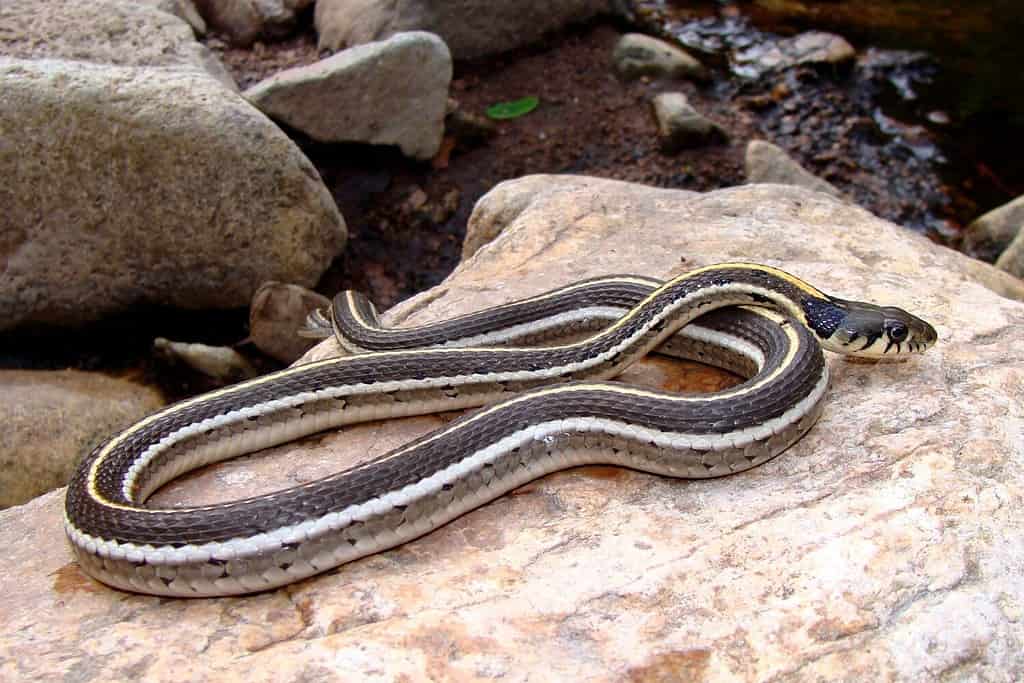
When visiting Sabino Canyon, guests often see black-necked snakes along the creek, usually in the riparian area.
©Matt Jeppson/Shutterstock.com
The black-necked garter snake occurs throughout southeastern and central Arizona. These snakes are semi-aquatic and generally found near water sources along semi-permanent streams and in rocky upland canyons. When visiting Sabino Canyon, guests often see black-necked snakes along the creek, usually in the riparian area. Snake enthusiasts typically visit this area when the creek flow diminishes, as these snakes are often sighted near the remaining pools of water, where they hunt for food.
Checkered Garter Snake

Checkered garter snakes are often sighted near water sources, like lakes, rivers, canals, wetlands, cattle tanks, and ditches. These snakes live in arid areas, so they are surprisingly good at locating water sources.
©iStock.com/slowmotiongli
The checkered garter snake is mostly found in desert and grassland habitats in southeastern Arizona. They are often sighted near water sources, like lakes, rivers, canals, wetlands, cattle tanks, and ditches. These snakes live in arid areas, so they are surprisingly good at locating water sources.
Mexican Garter Snake
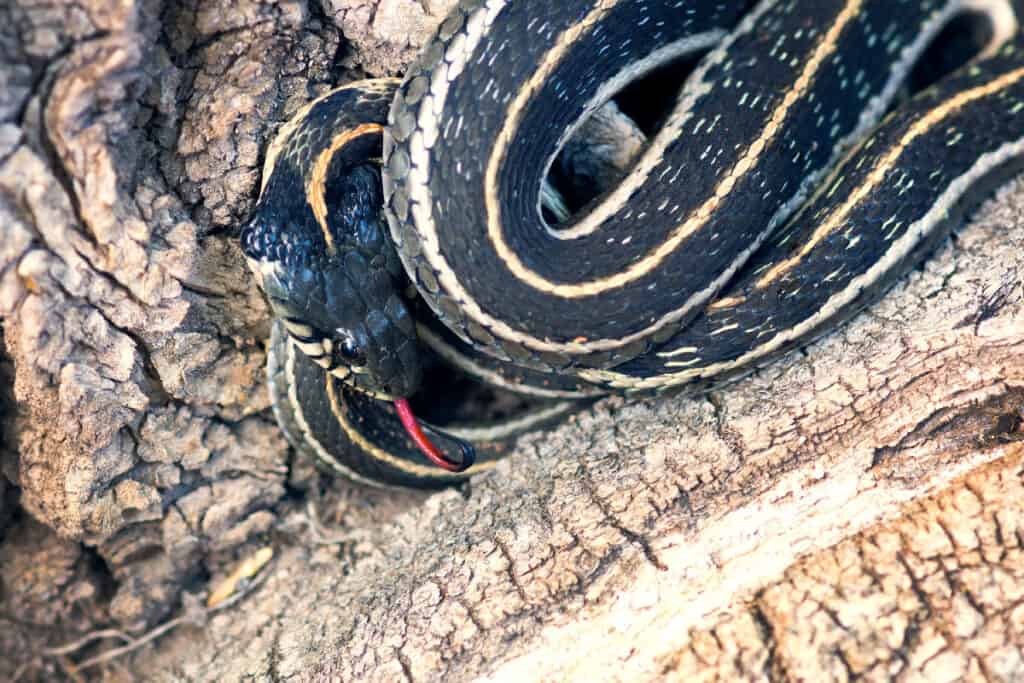
The Mexican garter snake primarily occurs in Arizona. However, there are scattered populations in southwestern New Mexico.
©IrinaK/Shutterstock.com
The Mexican garter snake primarily occurs in Arizona. However, there are scattered populations in southwestern New Mexico. These snakes inhabit marshes, rivers, stock tanks, lake impoundments, and fish hatcheries, and they occur at lower elevations than their cousins, the narrow-headed garter snake.
Banded Water Snake
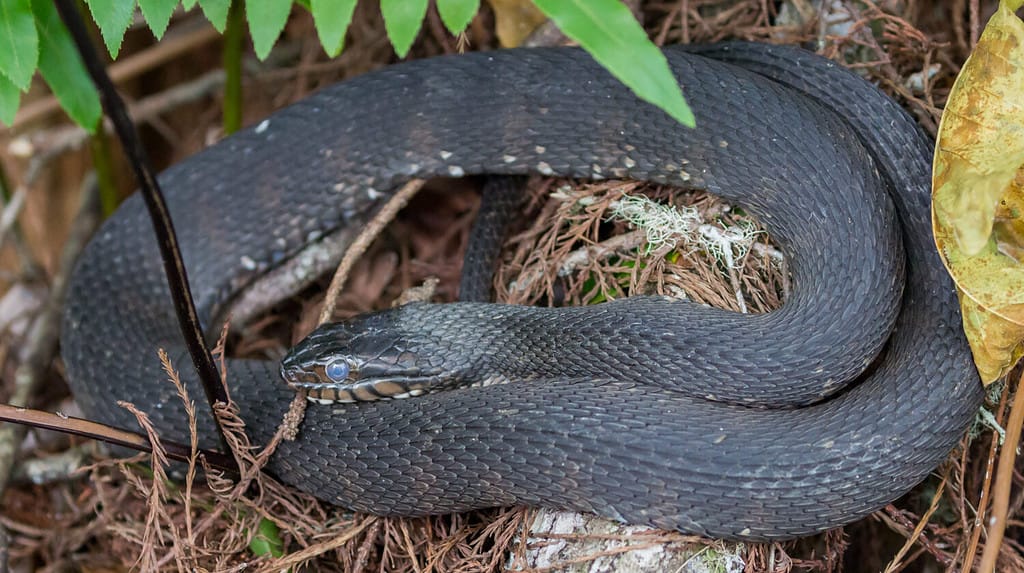
Banded water snakes are excellent hunters and have a high reproduction rate, so they compete with native species for food and space.
©EdwinWilke/Shutterstock.com
Also known as the Southern banded water snake, the banded water snake is an invasive species that occurs in Arizona. These snakes aren’t harmful to humans, but they do negatively impact native species. Furthermore, they can sometimes alter the ecosystem. Banded water snakes are excellent hunters and have a high reproduction rate, so they compete with native species for food and space.
Narrow-headed Garter Snake
Unfortunately, the narrow-headed garter snake is of special concern in the USA because of its fast decline over native habitats throughout the country. However, Oak Creek in Arizona has always housed the largest population of these snakes in the United States.
Most Snake-Infested Rivers in Arizona
1. Colorado River

The Colorado River is one of the most snake-infested rivers in Arizona. It is home to five semi-aquatic snakes, the banded water snake, the black-neck garter snake, the Great Basin gopher snake, the Nothern water snake, and the Plains garter snake.
Image: Wirestock Creators, Shutterstock
©Wirestock Creators/Shutterstock.com
The Colorado River is often referred to as the hardest-working river in the West. It’s a unique and diverse river that passes through 11 various national parks and monuments as it snakes through the different landscapes of two countries and seven states. Furthermore, it is an essential water supply for industry, agriculture, and municipalities from Tijuana to Denver. As a result, it supports a $1.4 trillion annual economy. This river offers plenty of recreational activities, like boating, fishing, whitewater paddling, backpacking, hiking, wildlife viewing, and more.
The Colorado River is one of the most snake-infested rivers in Arizona. It is home to five semi-aquatic snakes:
- Banded water snake
- Black-neck Garter Snake
- Great Basin Gopher Snake
- Northern Water Snake
- Plains Garter Snake
2. Gila River

One of the West’s longest rivers, the Gila River, originates from the headwaters of the Black Range in the wild Aldo Leopold Wilderness and above 10,000 feet in the Mogollon Mountains of the Gila Wilderness.
Image: Randap33, Shutterstock
©Randap33/Shutterstock.com
One of the West’s longest rivers, the Gila River, originates from the headwaters of the Black Range in the wild Aldo Leopold Wilderness and above 10,000 feet in the Mogollon Mountains of the Gila Wilderness. This river initially flowed 500 miles until it merged with the Colorado River, within proximity to the Mexican border. However, today, the river is drained dry halfway through because of municipal diversions and large irrigation in Arizona.
The Gila River is one of the most snake-infested rivers in Arizona. It is home to two semi-aquatic species, the black-neck garter snake and the narrow-headed garter snake. But if you see one of these serpents in the water, do not fear. They are not venomous and will probably be more scared of you than you are of them.
3. San Francisco River
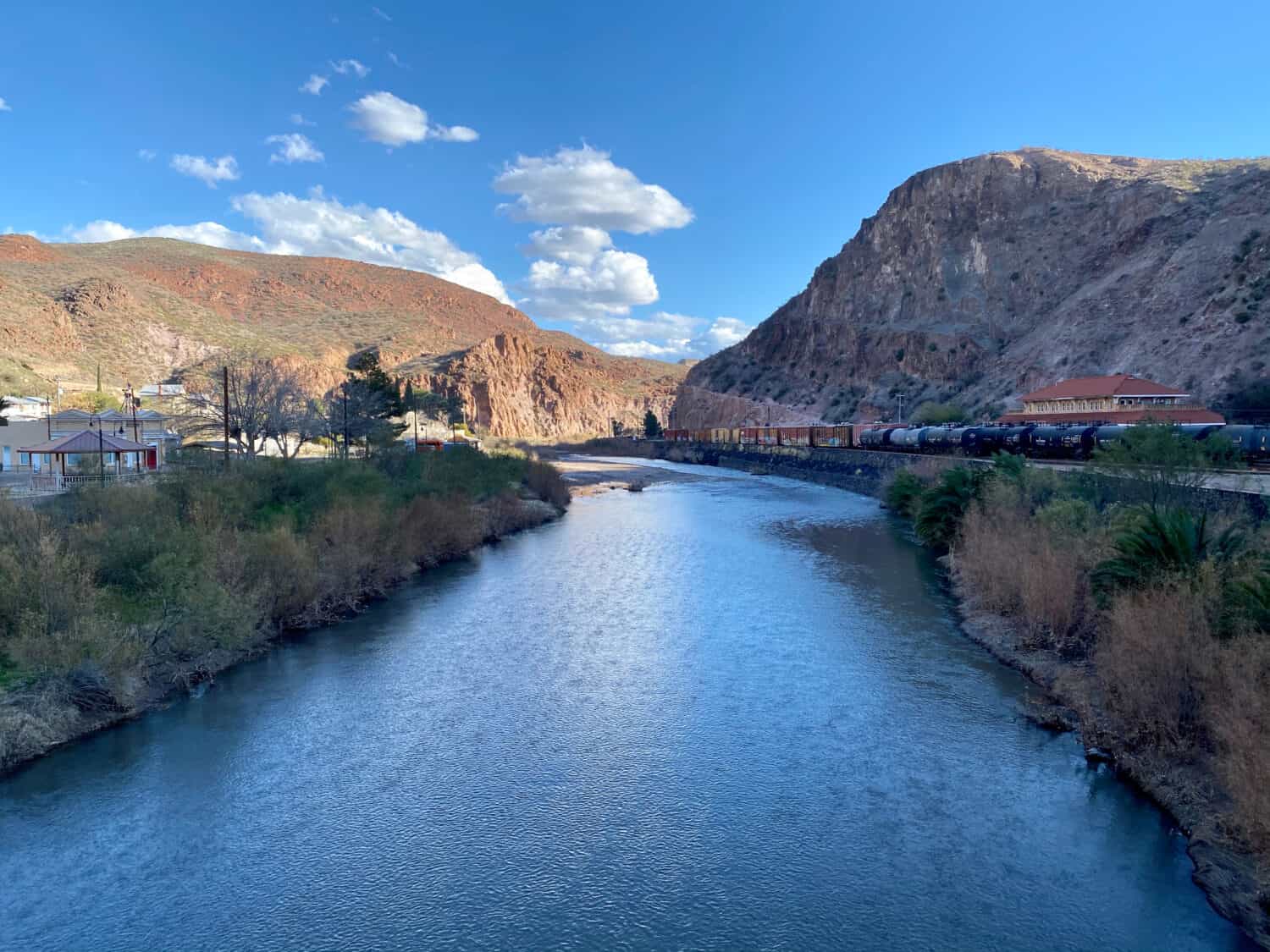
The San Francisco River runs through the wildlands of western New Mexico and eastern Arizona, flowing through narrow canyons, pine forests, and desert wilderness before merging with the Gila River.
Image: Johnny Coate, Shutterstock
©Johnny Coate/Shutterstock.com
The San Francisco River runs through the wildlands of western New Mexico and eastern Arizona, flowing through narrow canyons, pine forests, and desert wilderness before merging with the Gila River. This historic river is 160 miles long, originating in The Grand Canyon State’s White Mountains, southwest of Alpine. It flows into New Mexico through the Luna Valley, with the San Francisco Mountains to the south and the Hellroaring Mesa and the Dillion Mountains to the north.
The San Francisco River is one of the most snake-infested rivers in Arizona. While it is only home to one semi-aquatic species, the narrow-headed garter snake, there have been many sightings of this snake in the water.
3. Salt River
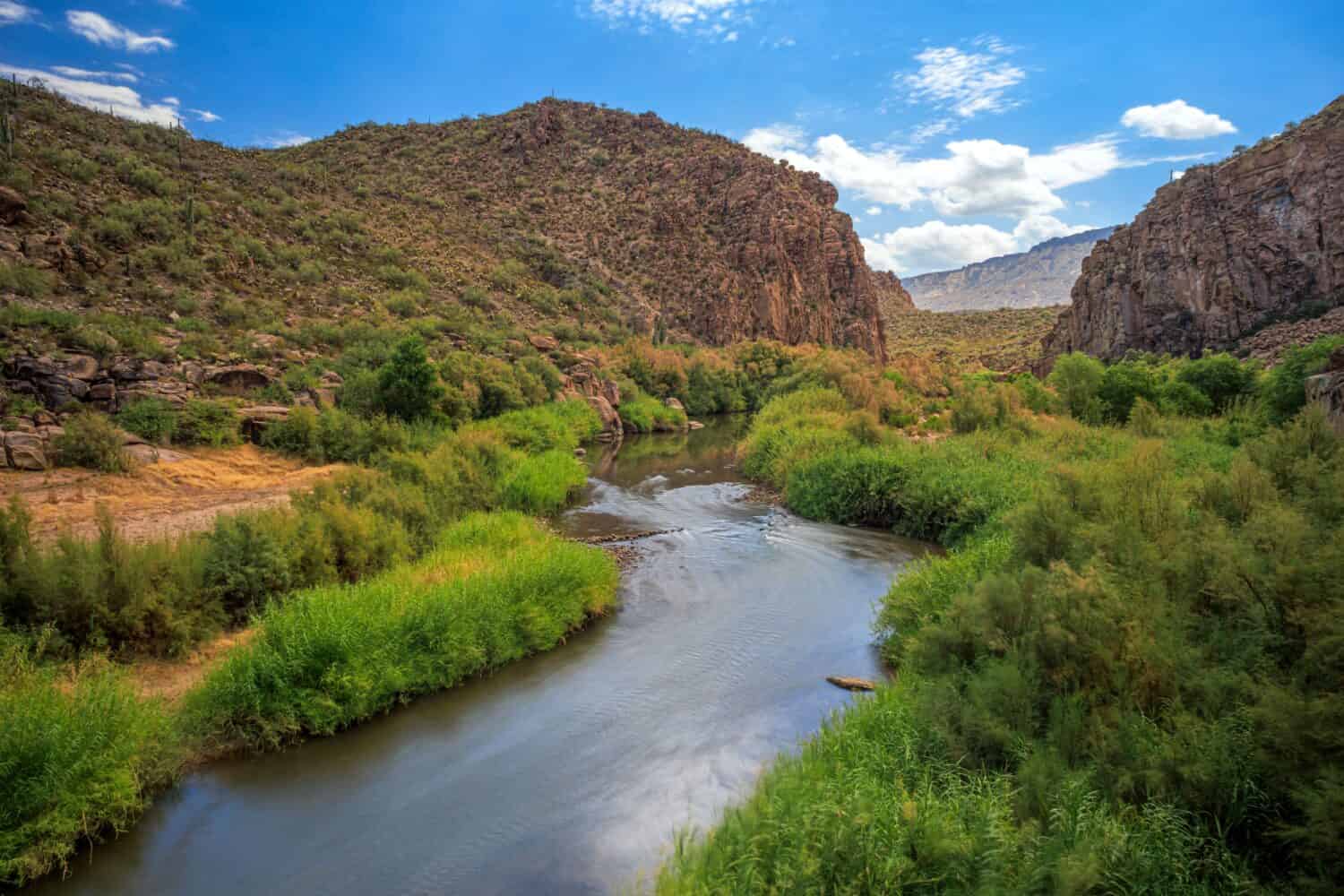
This river is the lifeblood of Pheonix and the surrounding areas. For example, it flows through the breathtaking yet rugged canyon wilderness, where it plays a vital role in cultivating industries, farms, and development.
Image: Wirestock Creators, Shutterstock
©Wirestock Creators/Shutterstock.com
The Salt River is well-known for its dry gravel bed in Phoenix’s metropolitan area. However, further upstream, it is a vibrant, living stream. This river is the lifeblood of Pheonix and the surrounding areas. For example, it flows through the breathtaking yet rugged canyon wilderness, where it plays a vital role in cultivating industries, farms, and development. As a result, it was essential in developing the city of Pheonix, which sits in the Sonoran Desert.
The Salt River is one of the most snake-infested rivers in Arizona, as it is home to the narrow-headed garter snake. However, these snakes are not harmful to humans, so if you see one, just let it be, and it will leave you alone.
4. Verde River
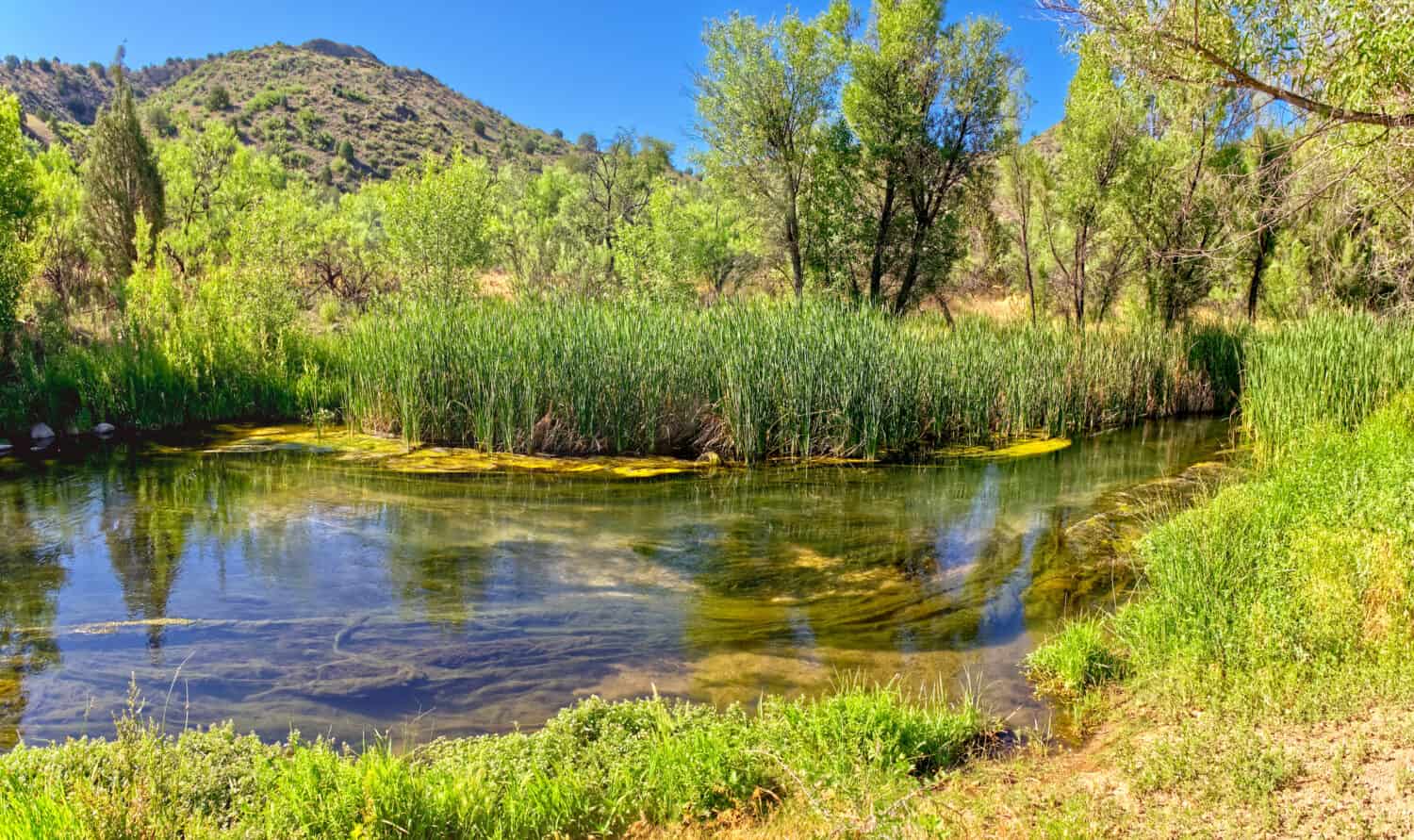
The Verde River is Arizona’s only federally designated wild and scenic river. It originates from the ground in Paulden, a rural community southwest of Flagstaff.
Image: Deep Desert Photography, Shutterstock
©Deep Desert Photography/Shutterstock.com
The Verde River is Arizona’s only federally designated wild and scenic river. It originates from the ground in Paulden, a rural community southwest of Flagstaff. This river is 195 miles long and runs southeastward through federal, private, state, and tribal lands before merging with the Salt River near Phoenix. While this river’s preservation is essential to the wildlife in the area and recreation, it is also vital to the health of the Verde River’s watershed, which feeds many Arizona communities downstream. Verde River is one of the most snake-infested rivers in Arizona. It is home to two semi-aquatic snakes, the Mexican and narrow-headed garter snakes.
Other Animals Found Near Rivers in Arizona
Snakes are not the only animals found near rivers in Arizona. There are many species that rely on these rivers as a water source, habitat, and more; they include:
- Coyote
- Black bear
- Mountain Lion
- Gila Monster
The photo featured at the top of this post is © Wirestock Creators/Shutterstock.com
Discover the "Monster" Snake 5X Bigger than an Anaconda
Every day A-Z Animals sends out some of the most incredible facts in the world from our free newsletter. Want to discover the 10 most beautiful snakes in the world, a "snake island" where you're never more than 3 feet from danger, or a "monster" snake 5X larger than an anaconda? Then sign up right now and you'll start receiving our daily newsletter absolutely free.
Thank you for reading! Have some feedback for us? Contact the AZ Animals editorial team.







